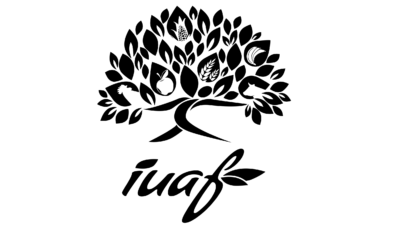By Patrick Worms, President of the International Union for Agroforestry.
Worldwide, farmers face great challenges due to increased competition in their sector. And that applies around the world, in the industrialised temperate north and in the rising economies of tropical Asia or the drylands of Africa. For example, external investors in Europe can purchase agricultural land in many EU countries. This drives up the price of land, making it difficult for younger farmers to get started. Farmers are also price takers, not price setters – the quip goes that they are the only ones in the agricultural value chain not to make any money – which is not sustainable.
In addition, strict regulations can make it challenging for farmers to adapt to their unique contexts. Rules set by the EU in Brussels often take the blame, but that is outdated: in the current iteration of the CAP, the common agricultural policy, it is EU member states that craft and impose regulations. Some people blame these regulations for the challenges faced by farmers. But talk to farmers, and what they complain about is not rules about the safe handling of pesticides, say, or the importance of maintaining soil health. A healthy soil is the basis of their livelihoods. And they know pesticides are poisons: they are the ones most exposed to them.
Pesticides cost a small fortune, too, so every farmer has a strong interest in reducing their use.
What they mostly resent is something entirely different: the extraordinarily detailed reporting requirements they face every day, and the strict rules that prevent them from adapting their work to the realities of their local contexts – most importantly, the weather (which rarely respects the calendars imposed by regulators). What they resent is not the fact that some rules are green, but that they are extravagantly, even absurdly bureaucratic. What this broadcasts is a lack of public trust in our farmers, which robs them of both agency and dignity. Farmers would much rather be judged on their results, and be given the freedom to act as their local circumstances require.
In Europe, the network of IUAF partners, most notably the European Agroforestry Federation (EURAF), have decades of hard work behind them to influence the EU’s Common Agricultural Policy (CAP) in insisting on much-needed reforms, most notably to allow and promote the integration of trees in agricultural landscapes.
There is the occasional success: last week, the European Parliament adopted the EU Nature Restoration Law, which aims to restore 20% of the EU’s lands and seas. This will require EU member states to pursue and document progress in at least two out of the following indicators:
1. The grassland butterfly index
2. The stock of organic carbon in cropland mineral soil (which rises more quickly in agroforestry systems than in row crops)
3. The share of agricultural land with high-diversity landscape features (such as agroforestry components)
That sounds good, but it’s less ambitious than the original text. The 2022 draft initially proposed the same 10% target for “high diversity landscape-features” as the Biodiversity Strategy 2030. Sadly, this was removed and left at the Member State’s discretion. Member States may also develop their own wall-to-wall methodologies to monitor landscape-features “within 12 months of publication”, improving on the broad-brush sampling methods provided by the EU-Joint Research Centre. Stil, the Nature Restoration Law offers Europe a chance to revive and rejuvenate its degraded ecosystems while enhancing the agricultural sector’s vital role through the flexibility it provides to member states.
We at IUAF welcome these developments, which offer a much-needed forum for farmers and conservation-minded citizens to work together to enhance agricultural resilience and protect farmers’ incomes by husbanding the many ecosystem services thriving ecosystems provide, from protection against storms and drought to significant reductions in soil erosion. And with the strong evidence that agroforestry systems significantly reduce pest loads, the potential for wins by farmers and the society they serve is rising.
This will not, of course, get rid of the heavy bureaucratic load farmers face, but offers a welcome opportunity to craft a reporting system based on results rather than practices. The mood music in Brussels, is very much moving in that direction; for the first tim, in many years, organisations typically opposed to one another, because of their focus on farmers or on the environment, are finding common cause in pushing for results-based subsidies. This is feeding into the team at the European Commission beginning to craft the next iteration of the CAP. So, with a bit of luck and a lot of goodwill, we may in a few years greet a new CAP that integrates the objectives of the nature restoration law while lessening the practice-based reporting obligations that farmers face.


